Dogs are not just pets; they’re our companions, confidants, and, in many cases, athletes. Whether you have a working dog, a canine athlete, or simply a furry friend who loves to play, agility training can be an excellent way to bond with your dog, keep them mentally and physically stimulated, and even compete in various canine sports events. But where do you start? How do you ensure your pup gets the most out of agility training? In this complete guide, we’ll delve into the world of agility training for dogs, covering everything from the basics to advanced techniques, so you and your furry friend can embark on an exciting journey together.
Contents Overview
What is Agility Training for Dogs
Agility training for dogs is a dynamic and interactive sport where canines navigate through a series of obstacles with the guidance of their handlers. The obstacles typically include jumps, tunnels, weave poles, A-frames, seesaws, and more. The goal is for the dog to complete the course as quickly and accurately as possible under the direction of their handler, who gives verbal and physical cues.
Understanding Agility Training for Dogs
Agility training for dogs is a captivating sport that involves navigating through a series of obstacles with speed, precision, and teamwork between the dog and its handler. It’s a dynamic activity that challenges both the physical and mental capabilities of the dog while strengthening the bond between the dog and its owner.
- Obstacles: Agility courses typically feature a variety of obstacles, including jumps, tunnels, weave poles, A-frames, dog walks, and see-saws. Each obstacle requires the dog to perform a specific action, such as jumping over a hurdle, weaving through poles, or navigating through a tunnel.
- Handler-Dog Communication: Effective communication between the handler and the dog is essential for successful agility training. Handlers use a combination of verbal cues, body language, and hand signals to guide their dogs through the course and direct them to the next obstacle.
- Speed and Accuracy: Agility training emphasizes both speed and accuracy. Dogs must complete the course within a specified time limit while accurately navigating each obstacle without faults or penalties. Achieving the right balance between speed and precision is key to success in agility competitions.
- Safety: Safety is paramount in agility training. Handlers must ensure that the course is set up correctly, with obstacles securely anchored and surfaces free from hazards that could cause injury to the dog. Additionally, dogs should be physically fit and properly warmed up before engaging in agility activities to prevent strain or injury.
Benefits of Agility Training for Dogs:
- Physical Exercise: Agility training provides dogs with a fun and effective way to stay physically fit and healthy. Negotiating obstacles and running through courses helps improve cardiovascular health, muscle strength, and overall agility.
- Mental Stimulation: Agility courses present dogs with a series of challenges that require problem-solving and decision-making skills. Figuring out how to navigate each obstacle engages the dog’s mind and keeps them mentally stimulated and sharp.
- Bonding and Teamwork: Agility training strengthens the bond between dogs and their handlers as they work together as a team to overcome obstacles and complete the course. Trust, communication, and cooperation are fostered through the shared experience of agility training.
- Confidence Building: Successfully completing obstacles boosts a dog’s confidence and self-esteem. Overcoming challenges and obstacles in agility training helps dogs develop resilience and a can-do attitude that carries over into other areas of their lives.
Getting Started with Agility Training for Dogs
Embarking on agility training with your canine companion is an exciting journey that promises fun, bonding, and a healthy dose of physical and mental stimulation for both you and your dog. Whether you’re looking to compete in agility competitions or simply want to engage in a rewarding activity with your furry friend, getting started with agility training requires careful preparation, patience, and dedication. Let’s explore the steps involved in beginning your agility training journey:
- Assess Your Dog’s Fitness:
Before diving into agility training, it’s essential to evaluate your dog’s physical fitness and overall health. Consider factors such as age, breed, weight, and any pre-existing medical conditions that may affect your dog’s ability to participate in agility activities. Consult with your veterinarian to ensure that your dog is in good health and free from any underlying issues that could pose a risk during training.
- Basic Obedience Training:
A solid foundation in basic obedience commands lays the groundwork for successful agility training. Teach your dog essential commands such as sit, stay, come, and heel to establish clear communication and control during agility sessions. Obedience training builds trust between you and your dog and forms the basis for more advanced agility skills.
- Gather Essential Equipment:
To set up your agility training course, you’ll need the following essential equipment:
- Jumps: Adjustable jumps allow you to customize the height based on your dog’s size and skill level.
- Tunnels: Lightweight tunnels provide a fun and challenging obstacle for your dog to navigate through.
- Weave Poles: Weave poles teach your dog to weave in and out in a serpentine fashion, enhancing agility and coordination.
- A-Frame, Dog Walk, and See-Saw: These larger obstacles add variety and complexity to your agility course, testing your dog’s balance and confidence.
You can purchase agility equipment from pet stores, online retailers, or specialized agility suppliers. Alternatively, you can get creative and make your own obstacles using PVC pipes, PVC connectors, and other readily available materials.
- Start Slowly:
Introduce your dog to agility training gradually, starting with simple exercises and obstacles to build confidence and enthusiasm. Begin with basic commands and exercises such as recalls, sits, and stays to establish a positive training environment. As your dog becomes more comfortable, gradually introduce agility equipment one obstacle at a time, focusing on positive reinforcement and rewards for successful completion.
- Use Positive Reinforcement:
Positive reinforcement techniques such as treats, praise, and play are powerful motivators for dogs during agility training. Use rewards to reinforce desired behaviors and encourage your dog to engage actively in training sessions. Keep training sessions short, fun, and upbeat to maintain your dog’s interest and enthusiasm.
- Monitor Your Dog’s Progress:
Pay close attention to your dog’s progress and adjust your training approach as needed. Observe how your dog responds to different obstacles and exercises, and tailor your training plan accordingly. Celebrate small successes and milestones along the way, and don’t be discouraged by setbacks or challenges. Consistency, patience, and positive reinforcement are key to success in agility training.
- Seek Professional Guidance:
Consider enrolling in a beginner agility class or seeking guidance from a certified agility trainer to get personalized instruction and feedback. Professional trainers can provide valuable insights, tips, and techniques to help you and your dog progress in agility training safely and effectively.
Basic Agility Training Techniques
Agility training for dogs involves a variety of techniques that teach your canine companion to navigate through obstacles with speed, precision, and confidence. These basic agility training techniques serve as the foundation for more advanced skills and help develop your dog’s agility, coordination, and teamwork with you as their handler. Let’s explore these techniques in detail:
- Jumping:
Jumping is a fundamental skill in agility training that involves clearing hurdles of varying heights. Proper jumping technique is essential to prevent injury and ensure your dog’s safety. Here’s how to introduce jumping to your dog:
- Start with low jumps set at a height that allows your dog to easily clear them.
- Use positive reinforcement, such as treats and praise, to encourage your dog to jump over the hurdles.
- Gradually increase the height of the jumps as your dog becomes more confident and proficient.
- Tunnel Running:
Tunnel running teaches your dog to navigate through tunnels of different lengths and configurations. It requires trust and confidence between you and your dog. Here’s how to introduce tunnel running:
- Begin with a short, straight tunnel without any turns to acclimate your dog to the experience.
- Use treats and toys to lure your dog through the tunnel, gradually increasing their speed and confidence.
- Introduce curved tunnels and longer tunnels as your dog becomes more comfortable with the activity.
- Weave Poles:
Weave poles challenge your dog’s agility and coordination as they weave in and out of a series of upright poles. Here’s how to teach your dog to weave:
- Start with a few weave poles spaced apart to allow your dog to easily navigate through them.
- Guide your dog through the weave poles using treats or a toy, encouraging them to move in a zigzag pattern.
- Gradually add more weave poles and decrease the spacing between them as your dog becomes more skilled at weaving.
- Contact Obstacles:
Contact obstacles, such as the A-frame, dog walk, and see-saw, require your dog to maintain balance and control while ascending and descending. Here’s how to introduce contact obstacles:
- Start with low inclines on contact obstacles to build your dog’s confidence and coordination.
- Use treats and praise to reward your dog for successfully navigating the contact obstacles.
- Gradually increase the incline and height of the obstacles as your dog becomes more comfortable with the challenge.
- Tire Jump:
The tire jump is a unique agility obstacle that requires your dog to jump through a suspended tire. Here’s how to introduce the tire jump:
- Start with the tire set at a low height to allow your dog to easily jump through it.
- Encourage your dog to jump through the tire using treats and praise as motivation.
- Gradually increase the height of the tire as your dog becomes more adept at jumping through it.
- Table or Pause Table:
The table or pause table provides a designated area for your dog to pause and reset during the agility course. Here’s how to introduce the table:
- Guide your dog onto the table using treats or a toy, encouraging them to stay in a sit or down position.
- Reward your dog for remaining on the table for a designated period, gradually increasing the duration of the pause.
- Incorporate the table into agility sequences, teaching your dog to quickly transition onto and off of the table.
- Verbal and Visual Cues:
Verbal and visual cues play a crucial role in guiding your dog through the agility course. Consistent cues help your dog understand what is expected of them and improve communication between you and your dog. Here are some common cues used in agility training:
- “Jump”: Indicates to your dog to leap over a hurdle.
- “Tunnel”: Directs your dog to enter and navigate through a tunnel.
- “Weave”: Signals your dog to weave in and out of weave poles.
- Hand signals: Accompany verbal cues to reinforce commands and guide your dog through the course.
Advanced Agility Training Technique
Advanced agility training techniques take your dog’s skills to the next level, refining their agility, speed, and precision on the course. These techniques require a deeper level of coordination, communication, and teamwork between you and your dog. Whether you’re aiming to compete in agility trials or simply seeking to challenge your dog’s abilities, mastering these advanced techniques will enhance your agility training experience. Let’s explore these techniques in detail:
- Handling Techniques:
Handling techniques are strategies used by handlers to guide their dogs through complex agility courses efficiently. These techniques involve the handler’s movement and positioning to communicate with the dog and direct them through the course. Some common handling techniques include:
- Front Cross: The handler crosses in front of the dog to change the dog’s direction and lead them to the next obstacle.
- Rear Cross: The handler crosses behind the dog to change the dog’s direction while maintaining forward momentum.
- Blind Cross: The handler crosses behind the dog’s line of sight, using body language to cue the dog to turn in the desired direction.
- Post Turn: The handler pivots in place after an obstacle to cue the dog to turn sharply in the opposite direction.
- Lateral Send: The handler sends the dog laterally away from them to navigate a sequence of obstacles from a distance.
Mastering these handling techniques allows handlers to navigate complex courses with speed and precision, maximizing their dog’s performance on the agility course.
- Speed and Accuracy Training:
Speed and accuracy are essential components of successful agility performances. Advanced training techniques focus on improving your dog’s speed, responsiveness, and consistency on the course. Here are some strategies for enhancing speed and accuracy:
- Tight Turns: Practice tight turns around obstacles to minimize the distance traveled and increase speed between obstacles.
- Fast Transitions: Work on quick transitions between obstacles, maintaining momentum and flow throughout the course.
- Distance Work: Train your dog to perform obstacles from a distance, allowing you to guide them through the course while remaining stationary.
- Visual Focus: Teach your dog to focus on the next obstacle or target, helping them anticipate your cues and make split-second decisions on the course.
By incorporating speed and accuracy training into your agility sessions, you can fine-tune your dog’s performance and shave valuable seconds off their course times.
- Course Analysis:
Course analysis involves studying agility courses to develop strategies and plans for navigating them effectively. Advanced handlers analyze course layouts, obstacle sequences, and potential challenges to devise the most efficient and successful approach. Here’s how to conduct course analysis:
- Identify Challenges: Identify the key challenges and technical elements of the course, such as tight turns, difficult weave entries, or challenging handling sequences.
- Plan Handling Strategies: Determine the best handling techniques and strategies for each section of the course, considering your dog’s strengths and weaknesses.
- Visualize the Course: Visualize yourself and your dog navigating the course, mentally rehearsing your handling cues and sequences.
- Adjust as Needed: Remain flexible and adaptable during the actual run, adjusting your plan based on real-time feedback from your dog and the course conditions.
Effective course analysis allows handlers to anticipate obstacles, make informed decisions, and execute smooth, efficient runs on the agility course.
- Conditioning and Fitness:
Physical conditioning is essential for agility dogs to perform at their best and reduce the risk of injury. Advanced conditioning techniques focus on improving strength, endurance, flexibility, and agility. Here are some conditioning exercises for agility dogs:
- Strength Training: Incorporate exercises such as uphill running, stair climbing, and balance exercises to strengthen your dog’s muscles and joints.
- Endurance Work: Gradually increase the duration and intensity of your dog’s exercise sessions to improve their stamina and endurance.
- Flexibility Exercises: Include stretching and range-of-motion exercises to maintain your dog’s flexibility and prevent muscle stiffness or injury.
- Agility Drills: Practice agility-specific drills and exercises, such as cone drills, ladder drills, and obstacle sequences, to improve your dog’s agility and coordination.
Consistent conditioning and fitness training help keep your dog in peak physical condition, allowing them to perform at their best during agility competitions and training sessions.
Bottom Line
Agility training offers a myriad of benefits for dogs and their owners, from physical exercise and mental stimulation to strengthened bonds and increased confidence. By following the steps outlined in this guide and embracing the journey with patience, positivity, and perseverance, you and your canine athlete can embark on a thrilling adventure together. So, gather your equipment, lace up your shoes, and get ready to unleash the full potential of your furry friend on the agility course!
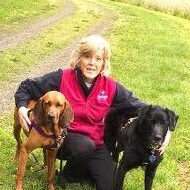
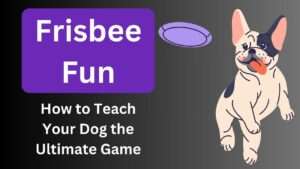

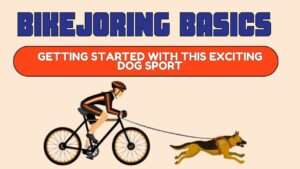
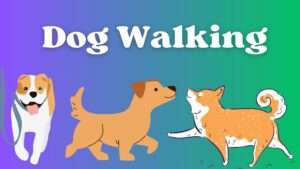
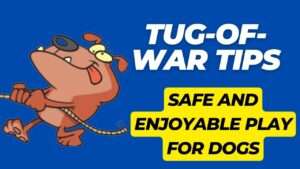

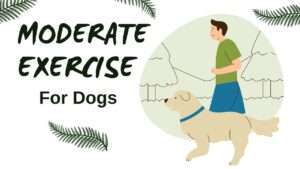





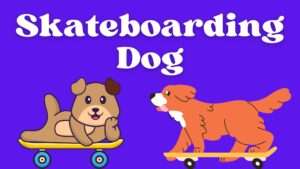
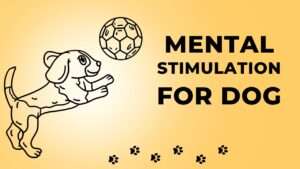

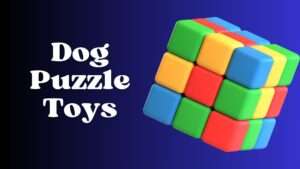

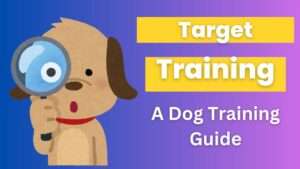






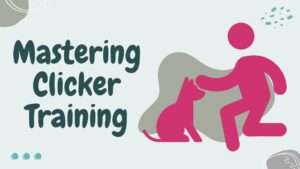

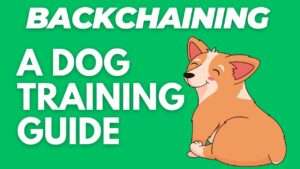








+ There are no comments
Add yours